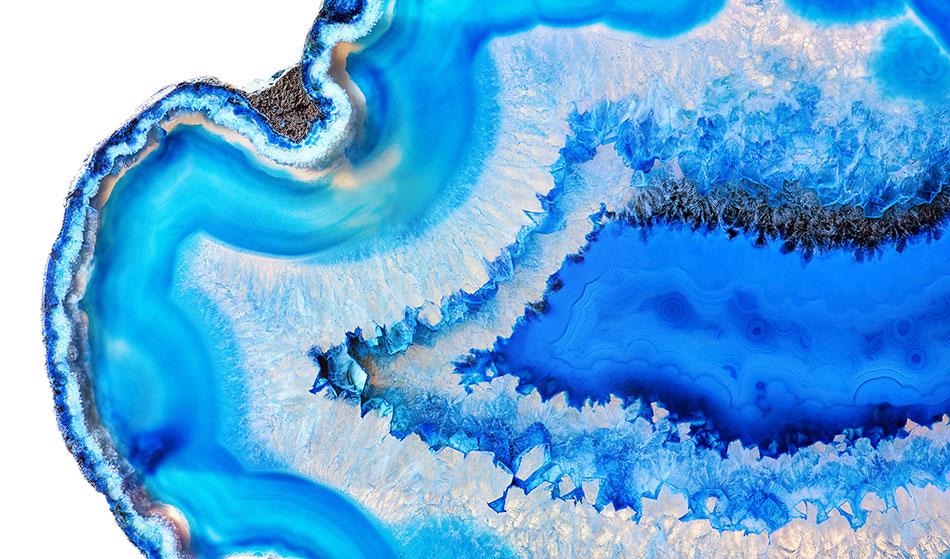
Sebastian Janicki / Shutterstock
Mining involves excavating useful minerals, coal, gemstones, chalk, gravel or clay from within solid earth. Stones and rocks uncovered during the process are made of clusters of minerals; to understand these rocks, you need to understand minerals and how they are identified.
Except for obsidian, a volcanic rock made of glass, and coal, all rocks are made of minerals; these minerals are naturally occurring inorganic solids typically formed when molten rock or magma cools, or by the separating of mineral-rich waters in underwater caverns for example. Minerals often form crystals – thousands have been identified but just 10 make up the majority of the earth’s crust: plagioclase; quartz; orthoclase; amphibole; pyroxene; olivine; calcite; biotite; clay; and garnet.
Most rocks will contain several minerals in a composition characteristic of that particular rock type. When identifying a rock, you first need to identify the individual minerals that make up that rock. Simply examining the physical properties of a crystal may lead to its identification; these properties are related to its chemical composition and bonding within the crystal lattice – the geometry of how atoms are arranged and bonded.
Color
Color can be useful in determining what a mineral crystal is, but it isn’t necessarily reliable. Take the example of gold and pyrite – different minerals, the same golden color.
Some minerals may exhibit many different colors; in the case of quartz, it might be clear, white, grey, brown, yellow, pink, red or orange. Many minerals take on a different color if they contain chemical impurities – quartz containing iron is colored purple and is better known as amethyst.
Luster
Luster describes how light reflects off a mineral’s surface. Terms might include metallic, glassy, pearly, greasy (like solidified bacon grease), dull or shiny.
It’s another simple means of describing a crystal, but it should be noted that luster differs from color; for example, pyrite is a shiny yellow mineral – yellow is the color, shiny is the luster.
Streak
This is another straightforward way to identify a crystal; the color of the powder left behind on an unglazed porcelain tile can illustrate what it might be. Pyrite for example, leaves behind a black streak, whereas gold leaves a golden/yellow trail.
Hardness
This is the strength with which a material’s surface resists being scraped or punctured. It’s measured on the Mohs scale, one being the softest (e.g. talc) and 10 being the hardest (e.g. diamond).
Cleavage and Fracture
Some minerals are harder to break than others. Cleavage refers to a crystal’s tendency to break along certain planes – a direction of weakness - to yield a smooth surface. It can be distinguished by how it consistently reflects light as if it were polished, smooth and even.
Not all minerals exhibit cleavage, but they all fracture. A fracture is not a break occurring along a cleavage line and is not determined by the structure of the mineral. If the crystal is fibrous, it will splinter like wood, others like quartz will give a smooth curved surface.
Crystal Structure
All minerals are crystalline, but only some display the shape of their crystals. A crystal’s structure is a 3D regular arrangement of their atoms and ions, a quantitative representation of their location of atoms, their chemical bond types and position, and the overall internal symmetry of their structure.
A crystal’s chemical composition is of fundamental importance – its properties are dependent on it. They also depend on the geometry of atoms and ions, and the electrical forces binding them together.
Large, well-developed crystals can be studied unaided with the human eye. Firstly, the way it reflects light from all sides is considered. Next hardness, cleavage and fracture are examined, along with luster and any other relevant properties such as effervescence or magnetism.
Smaller but still well-developed crystals may require the use of other analytical techniques such as wet analysis like dissolving in acid or flame tests; optical emission; x-ray fluorescence or atomic absorption spectroscopy.
Sources
Disclaimer: The views expressed here are those of the author expressed in their private capacity and do not necessarily represent the views of AZoM.com Limited T/A AZoNetwork the owner and operator of this website. This disclaimer forms part of the Terms and conditions of use of this website.